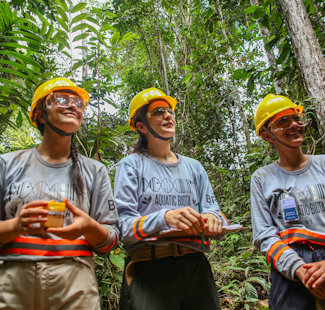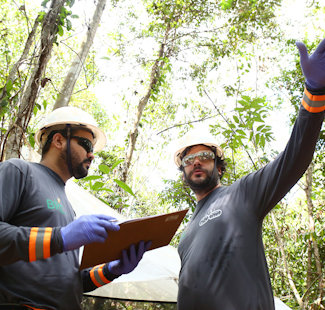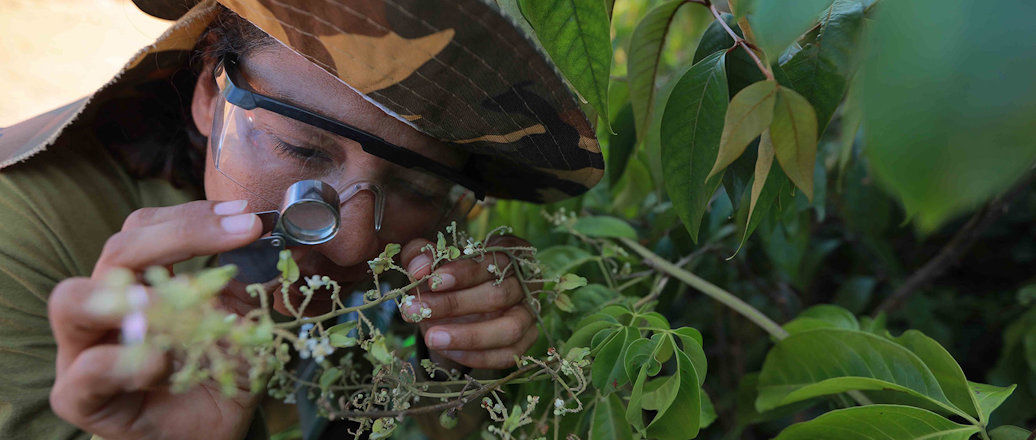"Over the last decade, the BRC has evolved from a formal agreement to a fully operational research consortium. The studies developed through it have brought applied knowledge related to the rehabilitation of mined areas. In addition, we have significantly increased our knowledge about biodiversity in the areas of Hydro Paragominas, from large mammals to small insects. All these learnings can, and do, contribute to the decision making process at the mine," says Eduardo Figueiredo, Director of Sustainability and Social Impact in Hydro Bauxite & Alumina.
Since it was created, the BRC has approved 26 research projects and 60 scientific articles have been published. In addition, Hydro has invested in scholarships over the last ten years and more than 270 people have benefited from the consortium.
Hydro's funding of the BRC has allowed the member institutes to invest in their research facilities, building new laboratories and acquiring scientific equipment that can be used for future research.
“These investments promoted better infrastructure in public institutions for research and will continue to be used in the name of science even after the conclusion of the BRC projects," says Figueiredo.
Fostering development of research and technology
The BRC has also contributed to the cultural and scientific exchange of knowledge between Norway and Brazil. Exchange programs give students and researchers the opportunity to be part of an international environment.
"The collaboration also provides researchers and students with a view of the complexities, challenges and opportunities linked to the operations of the mining industry in the Brazilian rainforest. This gives them a better foundation for formulating future basic and applied research on conservation and biodiversity restoration," says Hugo de Boer, associate professor at the Natural History Museum of the University of Oslo.

According to Professor Gracialda Ferreira from the Federal Rural University of the Amazon (UFRA), the BRC is a consortium that brings together research, teaching, and technological development institutions.
“The consortium not only fosters the development of research and technology, but also allows for improvement in training qualified labor, with practical experience in mining development,” says Ferreira.
The future of biodiversity in Pará and the Amazon
The signing of an additional five years of the BRC will continue the longevity of the partnership.
"Some research requires continuous and more detailed monitoring, with many days in the field. These works require the appropriate support that the BRC allows, a more intense involvement with research," says Marlúcia Martins, vice-coordinator of Research and Postgraduate Studies at the Emílio Goeldi Museum (MPEG).

Expanding the longevity of the BRC means contributing much more broadly to the Amazon, especially in the field of biodiversity restoration.
"There is still much to understand about the process of restoring a mined area, the efficiency of the technologies being employed, and even those that have already been improved with our contribution. My expectation is that we have many years to accumulate sufficient information for forest restoration as a public policy in Pará and the Amazon as a whole. What we are doing at the mine in Paragominas will be very useful on a large scale, and it should be a pilot so that we can propagate, compare, and fill knowledge gaps on the topic in the Amazon," says Martins.
The BRC is a partnership between Hydro and four research institutions: the Federal University of Pará (UFPA), the Emílio Goeldi Paraense Museum (MPEG), the Federal Rural University of the Amazon (UFRA), and the University of Oslo (UiO).Over the last years, Brazil has deepened research in biodiversity, innovation, sustainability, and other themes considered strategic for the country. Brazil is currently placed thirteenth internationally in scientific production.*
Over the last 10 years Hydro has invested approximately BRL 15 million (approximately NOK 33 million) in the BRC.
*Data from the Center for Management and Strategic Studies (CGEE), a social organization supervised by the Ministry of Science, Technology, and Innovation (MCTI).
Pubblicato: 14 novembre 2023








